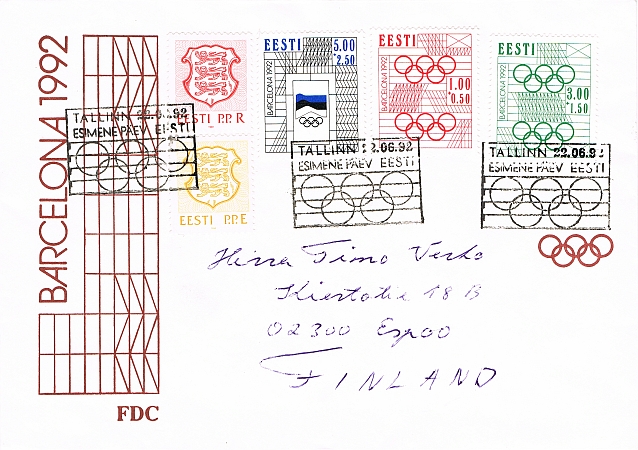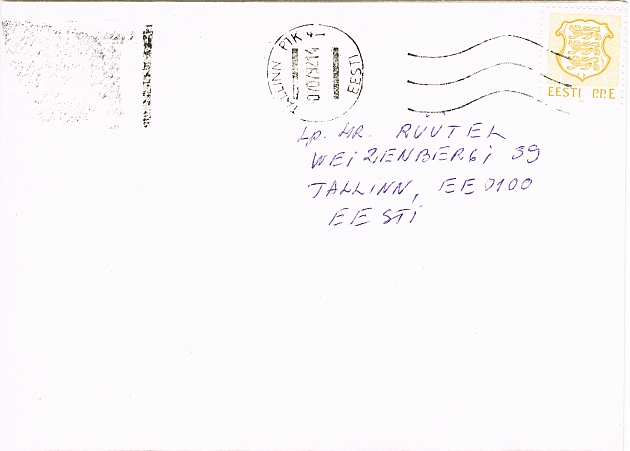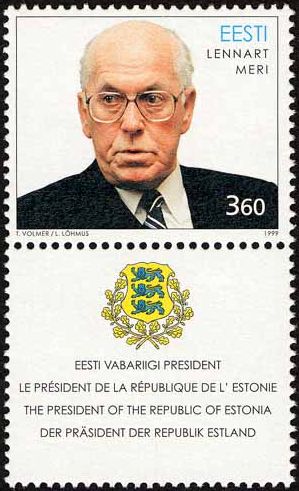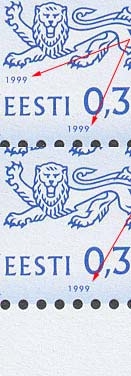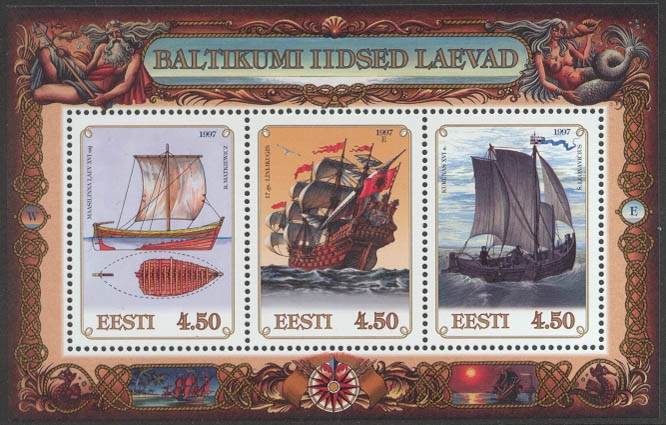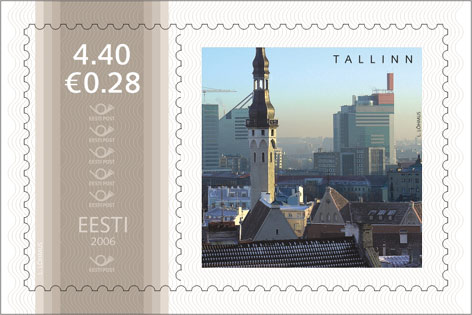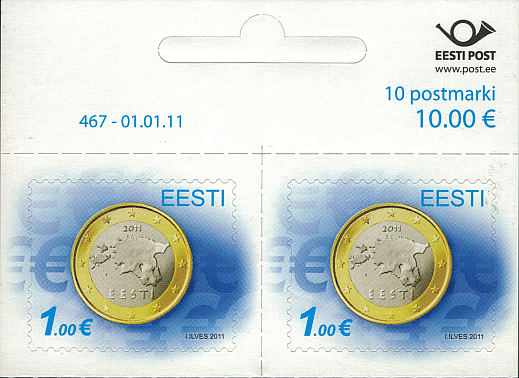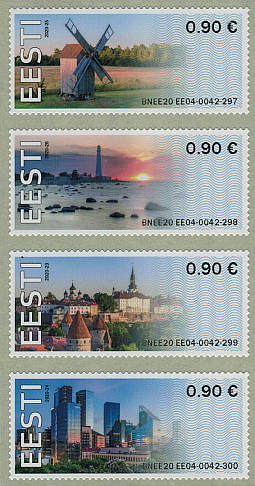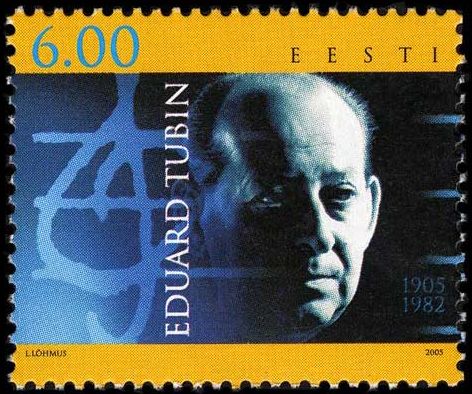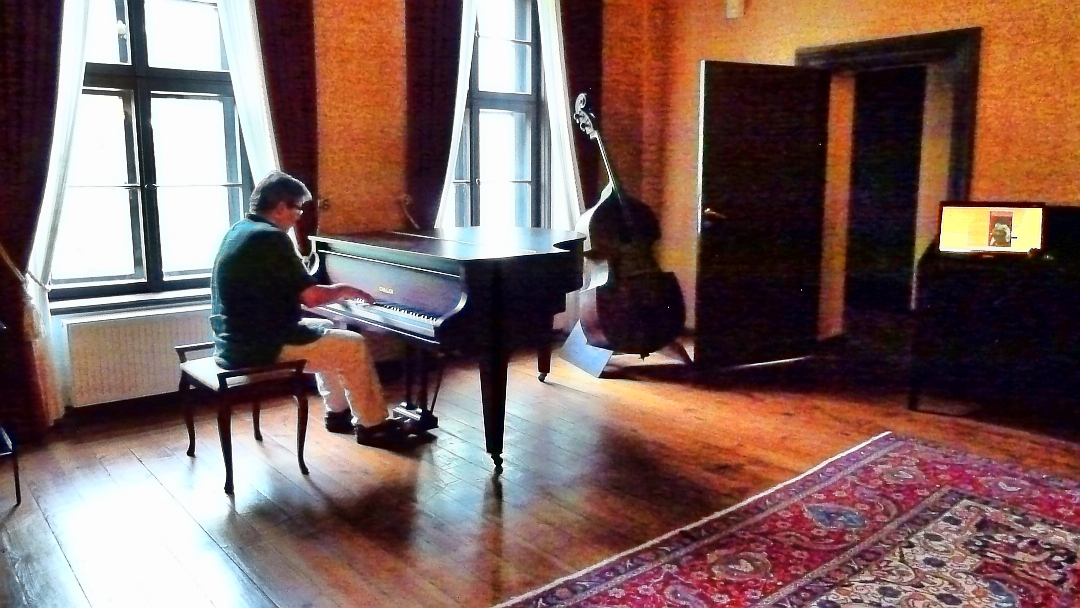Estonia
-
Royal Swedish Post
-
Imperial Russian Post
-
German Occupation / Ob. Ost
-
Independent Republic of Estonia
-
Soviet occupation
-
German occupation / Ostland
-
Camp Mail / Estonians in Exile
-
Independent Republic of Estonia (restored)
On March 30, 1990, Estonia declared itself a republic again.
During the coup d'état in the Soviet Union on August 18-21, 1991, Estonia took the opportunity to reconstitute its independence on August 20, 1991.
This happened after a process of several years that has gone down in history as the "Singing Revolution".
Estonia became a NATO member on March 29, 2004, joined the EU on May 1, 2004, and was – the first of the 3 Baltic states – to adopt the euro on January 1, 2011.
(Source: Wikipedia)
Stamps, covers and approaches to collecting
Ruble currency (1991–1993)
Immediately after the restoration of independence, the currency was still the Soviet ruble (1 ruble = 100 kopecks), this also applies to the first Estonian stamps of the restored Republic, which were issued from October 1, 1991.
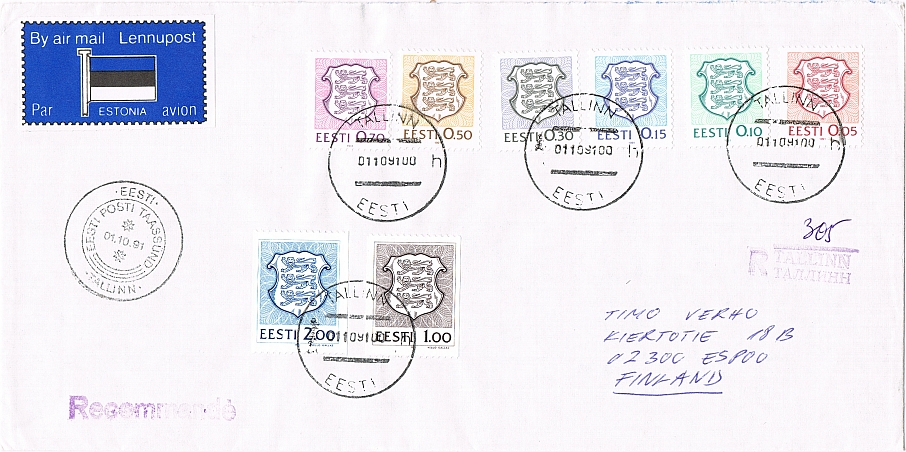
The first Estonian stamps after the restoration of independence, issued on October 1, 1991. First day set cover (FDC) to Espoo / Finland with a special cancel "Rebirth of the Estonian Post" and new airmail label.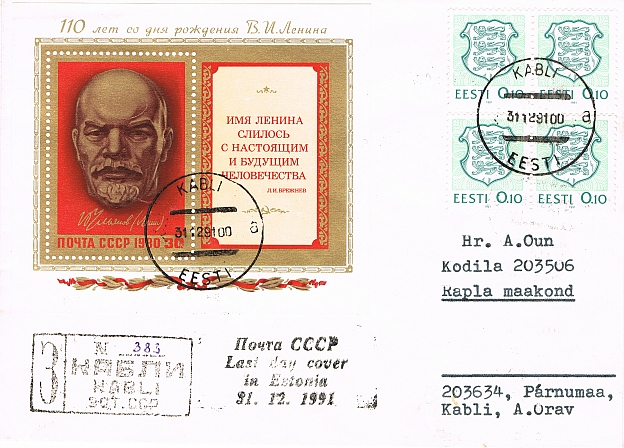
With effect from 31.12.1991, all Soviet stamps became invalid in Estonia. Here (for a change) is a last day cover (LDC) as mixed franking with Estonian and Soviet stamps.Registered letter franked with 70 kopecks: 20 kopecks for domestic letter after postage increase in September and 50 kopecks registered fee.
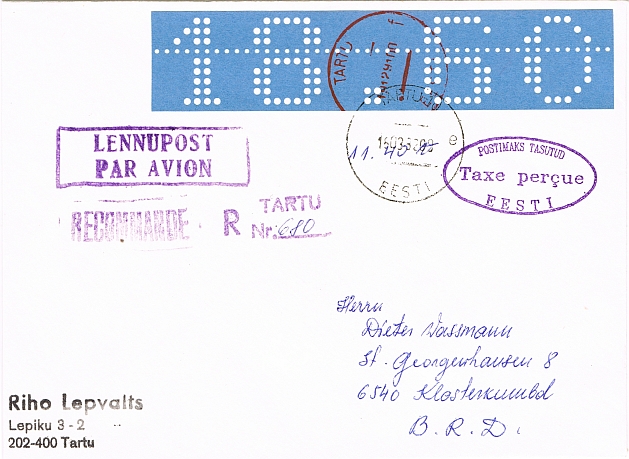
Especially for higher postage rates, there were hardly enough stamps in stock, so that in December 1991 the post office in Tartu (with the permission of the postal directorate) produced value imprints on perforated strips of the Observatory of the University of Tartu, which became official postage stamps with the red day cancel 19.12.91.Registered cover to foreign countries after postage increase in March 1992 franked with 30 rubles - partly with a perforated stamp, partly paid as cash franking (foreign postage Europe up to 20g: 20 rubles, registered postage: 10 rubles).
Kroon currency (1992–2010)
The new republic had to introduce its own currency due to the low purchasing power of the ruble. From June 20, 1992, there was again the Estonian kroon, whose exchange rate was firmly pegged to the German mark (8 EEK = 1 DM).
On the occasion of the Summer Olympics in Barcelona, 3 surcharge stamps were issued.The stamps previously sold for 1 ruble (P.P.E.) and 9 rubles (P.P.R.) without a fixed denomination now became 10 and 90 senti stamps with the real devaluation of the ruble (10 rubles = 1 Estonian kroon).
The total postage for this foreign letter was therefore 10 kroner.
With a little knowledge of history, a real rummage sale find:
The inconspicuous-looking letter was sent to the first President of the Republic of Estonia after regaining independence, "Mr. Rüütel" by address Presidential Palace in Tallinn. Arnold Rüütel, a former CP leader, was only replaced by Lennart Meri in the presidential elections in October 1992.
Some special stamps
Mi 357 A PF misprint at sheet position 83 with double year.Genuine covers with this stamp are practically unobtainable.
Double currency indications: Crowns and euros

"50 Years of European Stamps" - the first stamp of 2006 with a double currency indication, as the euro was originally to be introduced in Estonia in 2008 and the stamp users should already get used to the new values.
Whoever wins the Olympics in Estonia can find themselves on stamps or maximum cards quite quickly...Here: Kristina Šmigun and Andrus Veerpalu, winners at the 20th Winter Olympics 2006 in Turin..
The ban on depicting living persons, which applies in Germany – except for the current Federal President – would hardly be conceivable for the nationally conscious Estonians.
Euro currency (since 2011)
On January 1, 2011, from Michel No. 681, Estonia introduced the Euro (€) at 100 cents as its new currency. It replaced the Estonian kroon at 100 senti in the ratio 1 Euro to 15.6466 Estonian kroons.
Five years earlier, on January 1, 2006, starting with Michel No. 537, Estonian postage stamps had a dual nominal in Estonian kroons and euros, so that postal customers had enough time to say goodbye to their beloved kroons and get used to the new euro currency.
The previously issued stamps in krona currency, Michel Nos. 198 to 536, lost their franking validity at the end of December 31, 2013. All stamps issued from Michel no. 537 onwards in double nominal kr / € and in euro nominal have unlimited franking power.
Within the three Baltic states, Estonia took a pioneering role with the introduction of the € on January 1, 2011, followed by Latvia on January 1, 2014 and Lithuania on January 1, 2015. Latvia followed on January 1, 2014 and Lithuania on January 1, 2015. This Estonian pioneering role was accompanied by the privatisation of the state-owned EESTI POST under the umbrella of the company AS EESTI POST (brand name OMNIVA) on January 1, 2014.
OMNIVA, Latin for "it goes in all directions", has since developed into an internationally active logistics group that offers all conceivable physical and electronic platforms for the transport of goods and information, including financial services, in addition to the traditional "Post, Telegraph, Telephone" (PTT) services.
Thus, in addition to Estonian Post, the group today includes as its main business area the Estonian Financial Services Centre and the corresponding service centres in Latvia (Omniva SIA) and Lithuania (Omniva UAB). The companies operate as corporations under the umbrella of a holding company (umbrella company).

OMNIVA Baltic Parcel Network
All information on OMNVA, including postal and philatelic services (amongst others novelty service) can be found on the excellently designed website www.omniva.ee/en (Estonian, English, Russian).
Philately and travel
The fact that it is possible to combine travel to Baltic countries with philatelic events is not only demonstrated when ArGe members fly to exhibitions in which they themselves participate. Connections can also be made during "normal holidays", as the 2 following examples show:
Illustrations of all stamps published since 1991 are available in the Estonian Philately Wiki. Click on "foorum" for larger images!
-
Private Mail in Estonia



